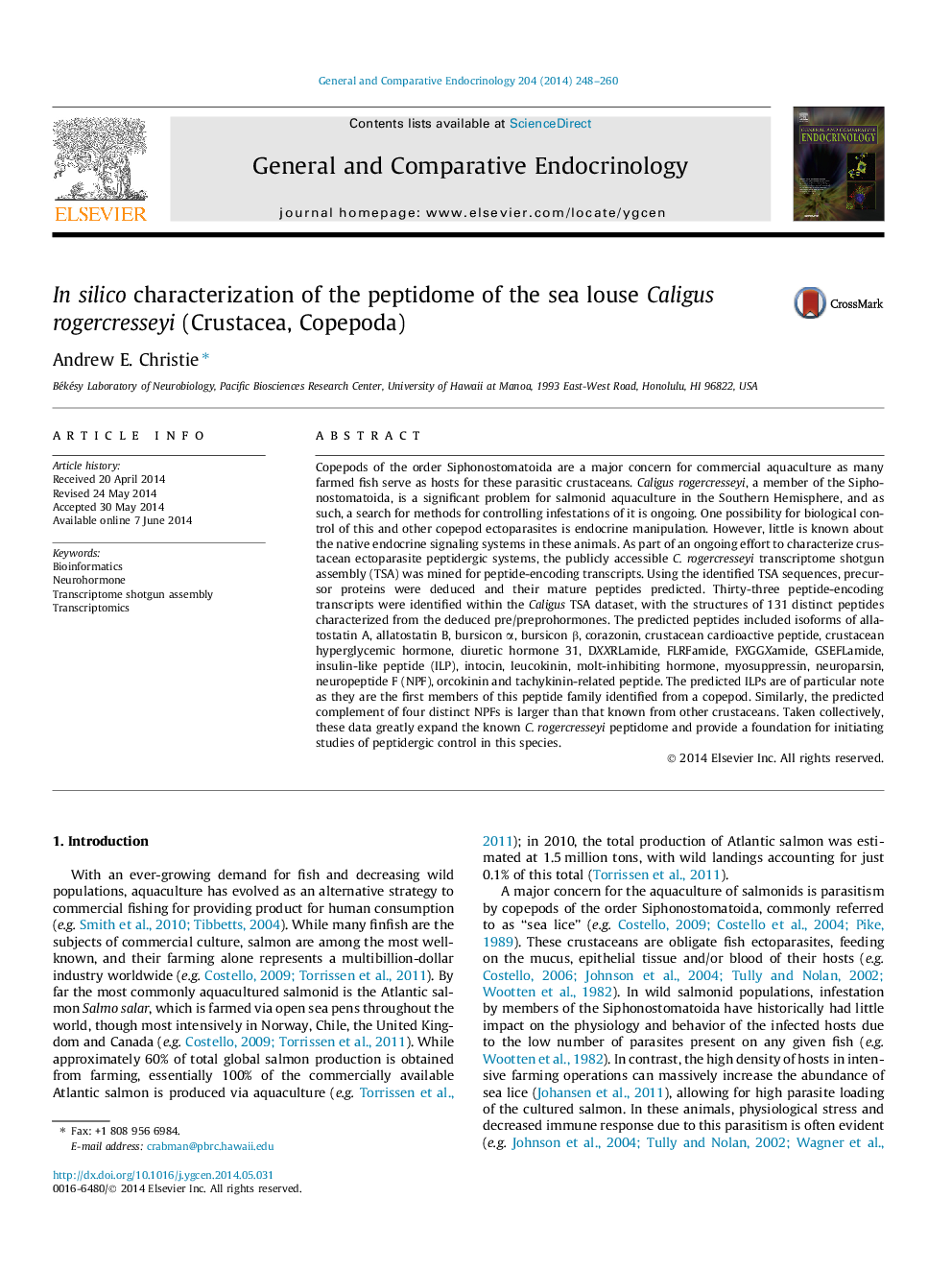| Article ID | Journal | Published Year | Pages | File Type |
|---|---|---|---|---|
| 2800196 | General and Comparative Endocrinology | 2014 | 13 Pages |
•Caligus rogercresseyi transcripts encoding 21 peptide families were identified.•The mature structures of 131 distinct peptides were predicted.•The identified peptides include the first insulin-like peptides from a copepod.•The new peptide discoveries expand the C. rogercresseyi peptidome nearly 20-fold.•These data provide a resource for studying peptidergic control in C. rogercresseyi.
Copepods of the order Siphonostomatoida are a major concern for commercial aquaculture as many farmed fish serve as hosts for these parasitic crustaceans. Caligus rogercresseyi, a member of the Siphonostomatoida, is a significant problem for salmonid aquaculture in the Southern Hemisphere, and as such, a search for methods for controlling infestations of it is ongoing. One possibility for biological control of this and other copepod ectoparasites is endocrine manipulation. However, little is known about the native endocrine signaling systems in these animals. As part of an ongoing effort to characterize crustacean ectoparasite peptidergic systems, the publicly accessible C. rogercresseyi transcriptome shotgun assembly (TSA) was mined for peptide-encoding transcripts. Using the identified TSA sequences, precursor proteins were deduced and their mature peptides predicted. Thirty-three peptide-encoding transcripts were identified within the Caligus TSA dataset, with the structures of 131 distinct peptides characterized from the deduced pre/preprohormones. The predicted peptides included isoforms of allatostatin A, allatostatin B, bursicon α, bursicon β, corazonin, crustacean cardioactive peptide, crustacean hyperglycemic hormone, diuretic hormone 31, DXXRLamide, FLRFamide, FXGGXamide, GSEFLamide, insulin-like peptide (ILP), intocin, leucokinin, molt-inhibiting hormone, myosuppressin, neuroparsin, neuropeptide F (NPF), orcokinin and tachykinin-related peptide. The predicted ILPs are of particular note as they are the first members of this peptide family identified from a copepod. Similarly, the predicted complement of four distinct NPFs is larger than that known from other crustaceans. Taken collectively, these data greatly expand the known C. rogercresseyi peptidome and provide a foundation for initiating studies of peptidergic control in this species.
